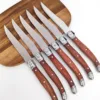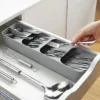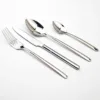Special Tips & Trends
Mastering the Art of Culinary Excellence: Your Guide to Choosing Quality Kitchen Cutlery
In the world of gastronomy, the tools you use can be just as important as the ingredients you select. Quality kitchen cutlery not only enhances the cooking experience but also elevates the final dish. The right knives make food preparation easier, smoother, and more enjoyable. This article delves into the art of culinary excellence by guiding you on how to choose the right kitchen cutlery.
Understanding Kitchen Cutlery
Kitchen cutlery encompasses a range of tools designed for cutting, slicing, dicing, and chopping. From gourmet chef knives to specialty tools, each has a specific purpose and impact on the culinary process. A well-equipped kitchen doesn’t just enhance cooking abilities; it also reflects the chef’s skills and attention to detail.
Types of Kitchen Knives
Before choosing the right cutlery, it’s essential to understand the various types of kitchen knives and their functions. Here are some staple knives every kitchen should have:
- Chef’s Knife: The workhorse of the kitchen, ideal for slicing, dicing, and chopping vegetables and meats. A balanced, sturdy chef’s knife can dramatically improve your efficiency.
- Paring Knife: A small knife with a short blade, perfect for precise cuts and intricate work, such as peeling fruits or deveining shrimp.
- Utility Knife: A versatile knife that fills the gap between a chef’s knife and a paring knife. Suitable for various cutting tasks, including sandwich preparation and fruit slicing.
- Boning Knife: A thin, flexible blade specifically designed for removing bones from meat, fish, and poultry.
- Serrated Knife: Ideal for cutting bread or other foods with a tough exterior and soft interior, such as tomatoes. The serrated edge helps break through crusts without squashing delicate interiors.
- Cleaver: A heavy-duty tool with a broad blade that can cut through bones and tough cuts of meat with ease.
Factors to Consider When Choosing Cutlery
When selecting kitchen knives, several critical factors come into play, ensuring that you invest in high-quality cutlery that meets your cooking needs:
Material
The material of the blade influences performance, durability, and maintenance. Popular materials include:
- Stainless Steel: Resilient and resistant to rust, stainless steel knives are an excellent choice for their balance of durability and ease of maintenance.
- High-Carbon Steel: Known for holding a sharper edge, high-carbon steel knives are often favored by professional chefs, but they require more upkeep to prevent rust.
- Damascus Steel: A type of high-carbon steel known for its unique patterns and strength. It offers the best of both worlds, combining sharpness with aesthetic appeal.
Handle Comfort and Grip
The handle is just as important as the blade. A comfortable, ergonomic handle provides better control and reduces strain during prolonged use. Consider whether you prefer:
- Wooden Handles: Provide a warm, traditional feel but may require more maintenance over time.
- Plastic Handles: Resistant to moisture and easy to clean but may not offer the same grip as wood or metal.
- Metal Handles: Often provide an industrial look and sleek design but may become slippery when wet.
Balance and Weight
Balance refers to the knife’s weight distribution between the blade and handle. A well-balanced knife feels natural in hand, allowing for easier precision. Weight preferences can vary:
- Lightweight Knives: Preferred for intricate tasks and quick handling.
- Heavier Knives: Ideal for sturdy cutting and chopping, offering more power but less maneuverability.
Budget
Quality cutlery can range widely in price. While it may be tempting to opt for cheaper options, investing in a few high-quality knives can prove more beneficial in the long run. Look for:
- Brands that offer warranties or guarantees on their products.
- Options available from both established manufacturers and artisanal makers.
Maintaining Your Cutlery
Once you have selected the right kitchen cutlery, proper maintenance is crucial to extend the life of your knives:
- Regular Honing: Use a honing steel regularly to maintain the blade’s sharpness.
- Sharpening: Invest in a quality sharpening stone or professional sharpening service.
- Proper Washing: Hand wash knives with mild soap and water; avoid dishwashers, which can damage the blades and handles.
- Safe Storage: Use magnetic strips, knife blocks, or sheaths to protect the blades and avoid accidents.
Exploring Quality Cutlery Options
To truly elevate your culinary experience, consider investing in quality cutlery sets that blend functionality and style. Here are a few options worth looking into:
Pastel Color Disposable Cutlery Set
This charming Pastel Color Disposable Cutlery Set is perfect for parties, weddings, and everyday use. Featuring biodegradable materials and vibrant pastel colors, this 24-piece set is both elegant and easy to clean up after events.

Gold Stainless Steel Cutlery Set
Indulge in the elegance of the Gold Stainless Steel Cutlery Set. Crafted from high-quality stainless steel, this 24-piece set combines aesthetic appeal with outstanding functionality, making it ideal for family gatherings or elegant dinners.
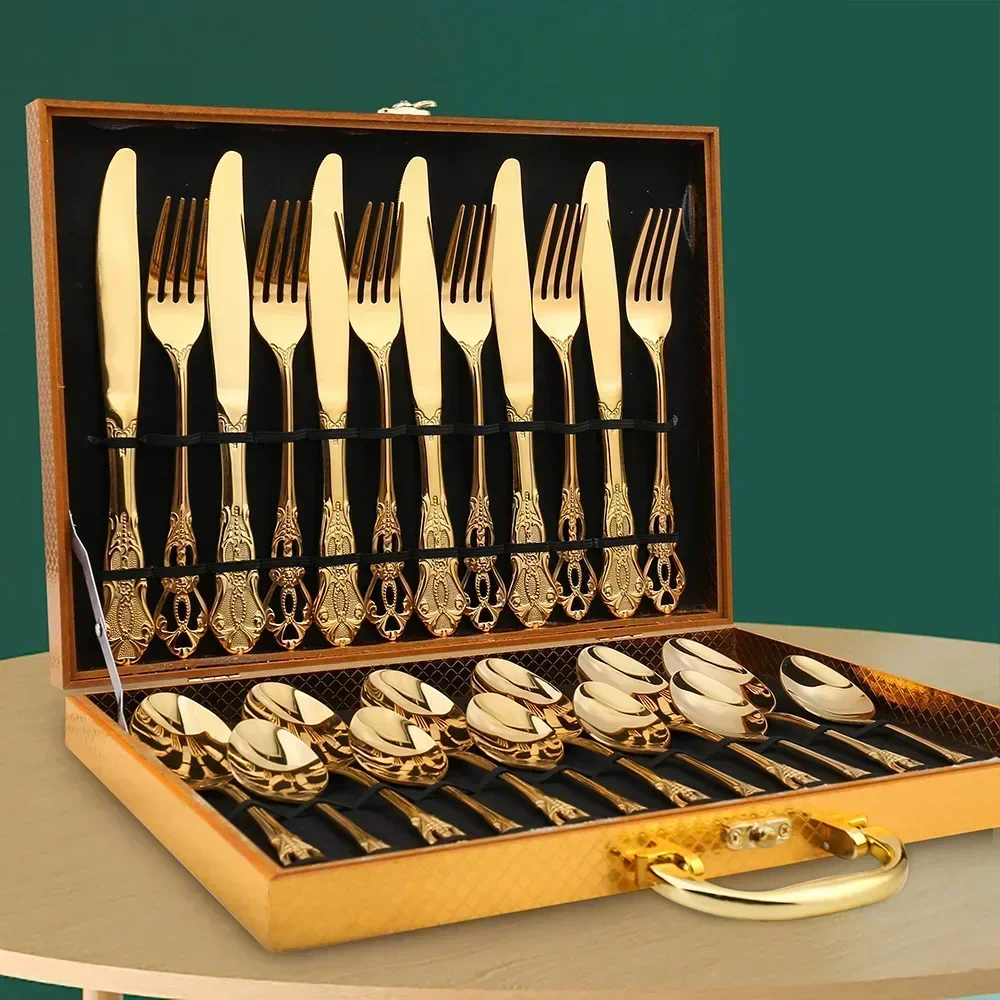
Luxury 24-Piece Stainless Steel Cutlery Set
The Luxury 24-Piece Stainless Steel Cutlery Set offers a sophisticated dining experience. Each piece is crafted from premium stainless steel, featuring a stylish mirror finish that is perfect for any setting.
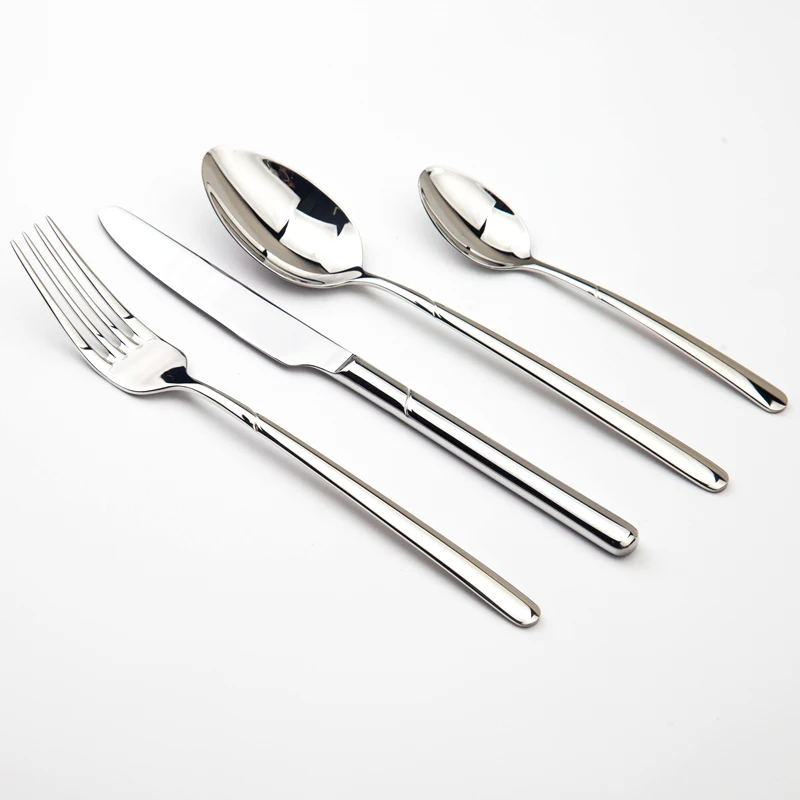
24-Piece Stainless Steel Cutlery Set for 6
This 24-Piece Stainless Steel Cutlery Set for 6 shines. It is perfect for family gatherings, combining elegance and functionality with its eco-friendly design and durable materials.
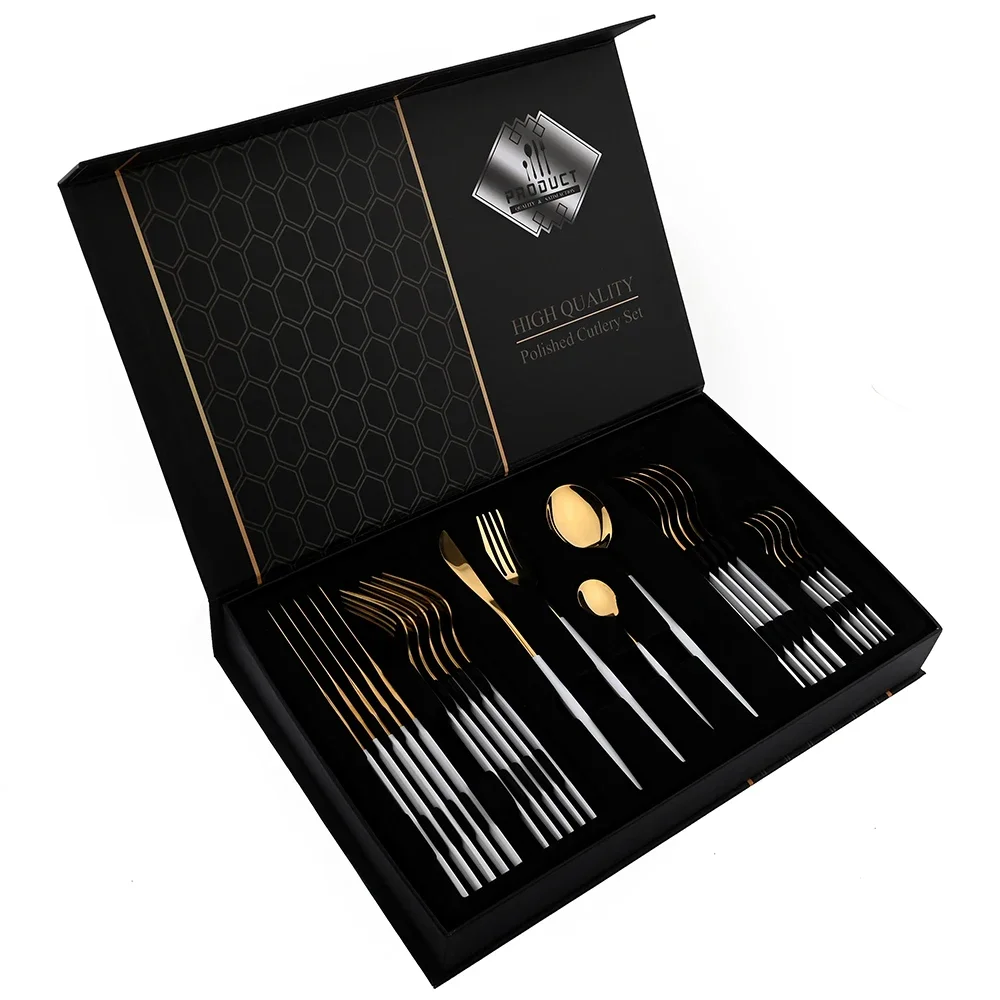
Portable Stainless Steel Camping Cutlery Set
For outdoor enthusiasts, the Portable Stainless Steel Camping Cutlery Set is a must-have. This compact set includes essential tools and is designed for convenience during camping trips and picnics.

Conclusion
Choosing the right kitchen cutlery is an art that contributes significantly to culinary excellence. Understanding the various types of knives, factors to consider, and the importance of maintenance can help you make informed decisions, enhancing your cooking style and skills. Like a painter with their brushes, a chef’s performance greatly depends on their tools. Invest in quality cutlery to elevate your cooking experience, transform your dishes, and enjoy the art of culinary craftsmanship.



